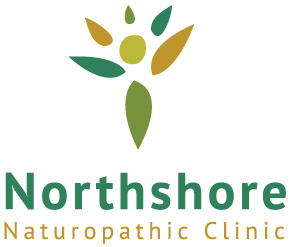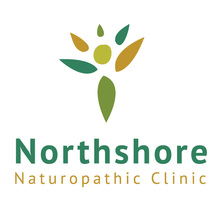By Dr. Matsen
I dedicated two chapters in Eating Alive II to the importance of oxygen to our cells’ health: within minutes of being deprived of oxygen, our cells—especially brain, nerve, and heart cells—begin to die. Yet in other chapters of Eating Alive II, I state that hydroxyl radicals rip up and damage membranes creating a diversity of diseases from asthma, allergies, eczema, and acid reflux to arthritis, heart disease, cancer, and schizophrenia. Hydroxyl radicals are free radicals that are derived from oxygen. So, oxygen is the great healer of the fortunate, yet, ironically, it’s also the great slayer of the unfortunate.
Recently a patient who is in his forties came in to see me; he had been diagnosed with sarcoidosis of the lungs. Even though he was taking steroids to help his condition, he had already lost half of his lung capacity in four years and his prognosis was complete loss of the use of his lungs within another four years. When he began my program my expectation was to prevent the disease from progressing. When he returned about a month later he was obviously better. He had colour in his cheeks that wasn’t there the previous month and noticeably more energy. Warts that he’d had for years had also disappeared. This was more improvement than I expected to see in such a short period of time. He informed me that in addition to following the Eating Alive Program, he had started using the Frolov Breathing Device, which he had heard about through a friend.
Having never heard of such a device, I ordered one and tried it out for myself. I also read the literature that came with the Frolov Breathing Device. Vladimir Frolov was a Russian researcher who was following up on previous studies on life extension. A notable observation was that societies with the longest-living people—such as the Hunzas of the Himalayas and the Vilacamambas of the Andes—lived at elevations between 1,000 and 2,000 meters above sea level, where the oxygen levels are much lower than at sea level. It had also been noted that oxygen-breathing land animals that returned to the sea, such as sea turtles, dolphins, and whales, were also known for living long healthy lives. A sperm whale is capable of diving to a depth of 1,000 feet and staying submerged for up to one and a half hours. Does it seem feasible that a whale can do this powered by the oxygen in a single breath of air? Perhaps the whale uses oxygen differently than it would have on land.
Frolov was aware of previous Russian studies that theorized that sea animals, which have access to 1/50th the amount of oxygen available to land animals, use oxygen differently. Sea animals must use a “slower burn” of oxygen to obtain more energy with less production of deadly oxygen free radicals.
It was thought that land animals that are exposed to lower oxygen levels, due to high altitudes or underwater breath-holding, must be able to activate this same shift in oxygen usage, with resulting improvement in health and longevity. It was thought that a sperm whale diving down 1,000 meters for over an hour actually makes oxygen by burning fatty membranes. While the whale still needs to surface for “exogenous” oxygen from the atmosphere, it can supplement that oxygen with “endogenous” oxygen produced by its own cells.
To replicate this process, Frolov built a breathing device consisting of a tube held in the mouth through which a person breathes in and out. The other end of the tube is submerged in a container holding a measured amount of water, through which the air must pass. By doing the breathing exercises through the water, there is a slight resistance when breathing. The exercises are done for 10 minutes per day at the beginning and gradually increased, with 40 minutes per day being the maximum.
The goal of the breathing exercises is not to increase oxygen uptake on inhalation as one might expect, but to decrease oxygen levels by gradually lengthening the period of exhalation. The breathing is not done by expanding the upper chest, but by using the diaphragm and the lower abdomen to slowly pump air out. Frolov found that within four to six months, most people had lengthened the exhalation phase enough that the body activated “endogenous” oxygen production to make up for the lack of “exogenous” oxygen. By reducing oxygen levels with the Frolov Breathing Device, the body is stimulated to make more red blood cells, thereby increasing the oxygen-carrying capacity in the blood vessels. The most dramatic results occur in areas with the most blood vessels, especially the lungs and circulatory system, particularly the arteries and the heart.
Asthma and bronchitis were reversed in many patients and the Russian Health Ministry declared the Frolov Breathing Device to be an effective cure for tuberculosis. In addition, other health problems in these patients began to improve. Migraines, hardening of the arteries, hypertension, gastritis, hemorrhoids, ulcers, colitis, allergies, psoriasis, arthritis, diabetes, herpes, fungal diseases, and impotence were a few of the conditions that Frolov saw improve or completely disappear. Frolov’s breathing device also seemed beneficial in recovery after stroke and heart attack.
A bigger insight came in 1995 after Frolov himself was diagnosed with cancer of the rectum. His role changed from experimenter to guinea pig in the experiment. Frolov claims that his breathing therapy stopped the cancer from growing, though he doesn’t say that it went away. He also claims that he has seen numerous patients with terminal cancer overcome their dire prognosis with his breathing device.
While I have already seen many of these same conditions improve when patients follow the Eating Alive program, what I find most intriguing is Frolov’s claim to have cured chronic leukemia. While I have seen marked improvement in some patients with chronic leukemia, I’ve yet to see anyone that could be called “cured.” I look forward to seeing if this is indeed a possibility.
Based on the unexpected and dramatic results seen in my patient with sarcoidosis, I’m going to become a distributor of the Frolov Breathing Device so as to make it available and to evaluate its benefits. If anyone has prior experiences—positive or negative—with it, please contact us. This could be the beneficial health device that I was hoping for when I so enthusiastically wrote Chapters 5 and 6 in Eating Alive II.


